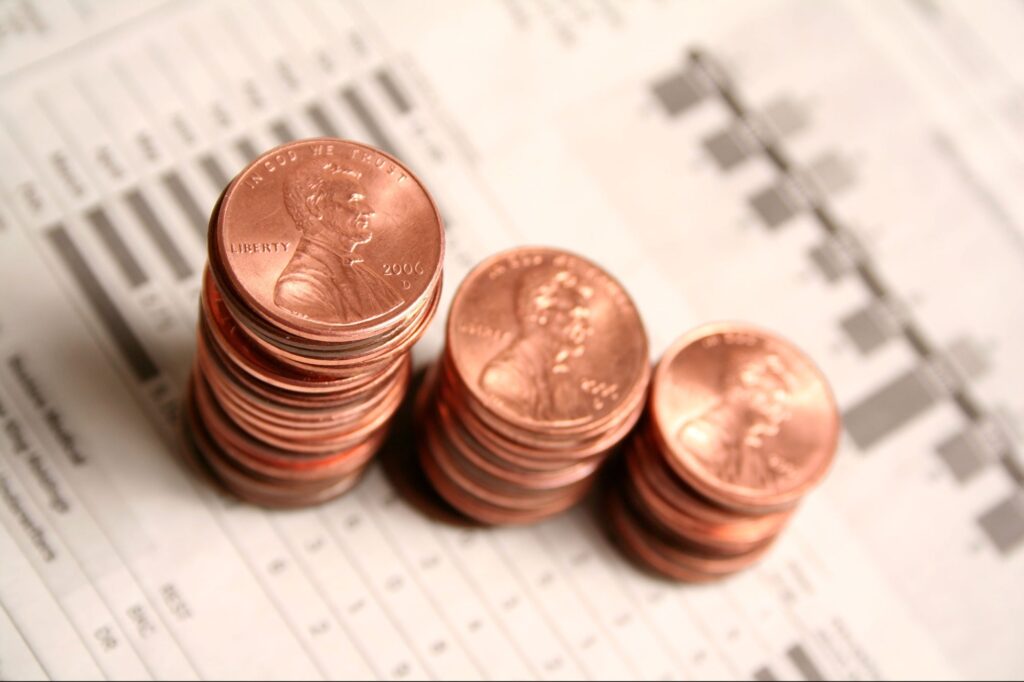Entrepreneur
It seems like a match made in heaven, right? Penny stocks can have amazing runs, and day traders are gamblers, right?
Both are only sometimes true. Penny stocks do have several attractions:
- They’ve made some people wealthy in a hurry.
- Because investors can buy lots of shares cheaply, these stocks provide a special ego boost. (“Sorry I was late; I just bought 50,000 shares….”)
- The extremely low share price means you might be in on the ground floor of something that could theoretically grow to be the next household name. At one time, Ford Motor and Sirius XM were penny stocks.
First, let’s define what we’re talking about. Though the SEC considers a penny stock to be anything trading under $5 per share, I go with the conventional definition: anything trading for less than $1.
Related: Why Do Penny Stocks Often Crash After Rallies?
As for day traders, certainly, some of them are gamblers. If you only focus on the upside, you’re a gambler. You are also one if you get your investment ideas from social media and not from how a stock is actually behaving at the moment.
I am a professional day trader and don’t consider myself a gambler at all. I’m a hunter of volatility and a manager of risk. Although penny stocks might exhibit plenty of volatility, they are not my style for four reasons.
1. Many penny stocks are thinly traded
In other words, few shares switch hands on any given day. That is a major problem. I want to see lots of activity on a stock I’m trading. If I have a hard time finding a buyer for even 1,000 shares at a price I like, this is a problem. I look to trade stocks where many millions of shares change hands in a day.
Related: How I Turned $583 into $10 Million by Day Trading
2. Few analysts follow penny stocks
I don’t follow analysts, but I like the thought of analysts scrutinizing the stocks I trade. Their opinions tend to get published widely, bringing attention to the stock. That attention brings not only liquidity but also scrutiny.
When Wall Street ignores a penny stock, I feel like it’s easier for problems in a company to go unnoticed longer until they become existential. I don’t want to be in a stock when the existential hits the fan.
3. They have a higher magnitude of risk
Penny stocks have a risk of going to zero. That’s too rich for my blood. Because my average hold time is five minutes, when I get into a stock priced between $2 and $20, I do not consider all my money to be at risk. I’ll be out of my position long before it reaches zero. In fact, before I ever place a trade, I calculate my exit point in case things go south. But in the Wild West that penny stocks inhabit, a position can indeed go to zero, fast.
Related: Good Losers are Made — Not Born. 4 Principles for Cutting Your Losses Before It’s Too Late
4. Trading halts are way too common
All stocks experience trading halts occasionally for several reasons: significant news might be pending, technical glitches, or after the stock price moves by 10% or more within five minutes, among other reasons.
Another type of halt that can happen on any stock — but is more common with penny stocks — is a “T12” halt. It happens when the exchange requests additional information from the company. This type of halt can last for weeks or even months and is often related to a pending government investigation. Because penny stocks are sometimes used for market manipulation and fraud, a penny stock that goes up 500% on no news could be at risk of being halted either pending news or on a T12. No thanks.
I’ve made considerably more than 20,000 day trades. My style of day trading is not about the fundamentals of a given stock or my assessment of its short- and long-term prospects. It’s about the fundamentals of human nature; more specifically, the nature of other traders who are looking at the same information that I am.
I make money when I anticipate what they will do in the extreme short term (measured in minutes or even seconds), and I usually lose money when I am wrong.
I have no interest in stocks that have the potential to move or ones that analysts gush over. I focus on stocks that are moving right now, in this very hour or minute. When traders put down their fresh cup of coffee in the morning and turn on their monitors, I’m focused on the stocks that are already at the top of the list of the biggest gainers. I’m focused on THE stock today.
Just as with everything else in life, such stocks follow the Pareto Principle. They get a disproportionate share of attention. Traders want in on a stock that other traders just rode up for a profit this morning. If they don’t get in at first, then FOMO kicks in big time.
Controlling emotions is the hardest part of successful day trading, even for seasoned pros. Rudyard Kipling wasn’t a day trader, but he could have been. He said: “If you can keep your head when all about you are losing theirs….”
Read the full article here











